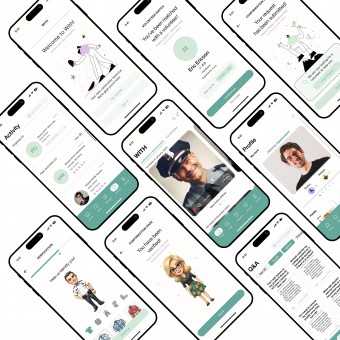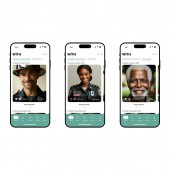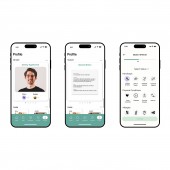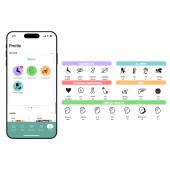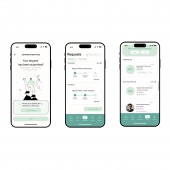DESIGN NAME:
With
PRIMARY FUNCTION:
Mobile Application
INSPIRATION:
When urgent situations involving individuals with undisclosed medical conditions, it is critical for emergency responders to act appropriately. Failure to recognize symptoms may erode trust and unnecessarily escalate incidents. There is a critical need to equip these responders with comprehensive training that includes not only technical skills but also emphasizes effective communication and understanding diverse medical conditions.
UNIQUE PROPERTIES / PROJECT DESCRIPTION:
'WITH' service strengthens relationships between the burdened emergency responders and all citizens. The platform engages both ends in active information exchanges, optimizing task efficiency & safety and promoting community involvement.
OPERATION / FLOW / INTERACTION:
This service focuses on creating a system that facilitates the prompt mobilization of emergency responders, ensuring swift and accurate responses. Balancing the interface to address non-urgent citizen requests, providing a mechanism for citizens to seek help without overwhelming responders, is crucial. The design aims to lower the workload of emergency responders through intuitive interfaces, automated support systems, and comprehensive databases, fostering informed decision-making. Establishing and maintaining trust requires conveying reliability, transparency, and efficiency. Design features assist responders in identifying symptoms promptly, avoiding erosion of trust, and preventing unnecessary escalation of incidents. Comprehensive training involves designing an interface that goes beyond technical skills, incorporating effective communication and understanding diverse medical conditions. Additionally, the platform includes a 'Wall of Honor for Emergency Responders and Volunteers' to boost motivation, recognizing and commemorating the dedication and valor of those who serve. The overarching goal is to revolutionize the interaction between citizens and emergency responders through active information flow, creating an ecosystem where information is seamlessly exchanged, and both parties feel supported and informed.
PROJECT DURATION AND LOCATION:
The project started in August 2021 in West Lafayette, Indiana and was initially completed in February 2024.
FITS BEST INTO CATEGORY:
Interface, Interaction and User Experience Design
|
PRODUCTION / REALIZATION TECHNOLOGY:
The design software used was Figma, Adobe Illustrator, Photoshop, and other prototype developing tools.
SPECIFICATIONS / TECHNICAL PROPERTIES:
The project's design revolves around optimizing the user experience within mobile applications, potentially expanding to desktop applications and web browsers in the future. The mobile version was designed with iOS.
TAGS:
Community, Service, Emergency responders, Citizens, Safety, Honor, Volunteer
RESEARCH ABSTRACT:
This research addresses the multifaceted challenges in designing comprehensive emergency response systems. The system aims to enable responders to swiftly mobilize and dispatch teams to emergency locations while balancing non-urgent and specialty-specific citizen requests. The design focuses on reducing the workload of responders, providing ample resources for informed decision-making, and fostering public trust. Recognizing the criticality of urgent situations involving undisclosed medical conditions, the research emphasizes the need to equip responders with comprehensive training that includes technical skills, effective communication, and understanding diverse medical conditions. The ultimate goal is to revolutionize the interaction between citizens and emergency responders by establishing an ecosystem that ensures active information flow, enhancing the reliability and efficiency of emergency response systems.
CHALLENGE:
Designing a comprehensive emergency response system poses multifaceted challenges. It requires creating an interface that enables responders to promptly mobilize and dispatch their team to emergency locations while balancing non-urgent citizen requests. The design must lower the workload of responders, providing ample resources for informed decision-making to promote trust in the public eye. Recognizing urgent medical situations is critical, necessitating features that help responders identify symptoms promptly. Equipping responders with comprehensive training, including effective communication and understanding diverse medical conditions, is essential to revolutionize citizen-responder interaction. The goal is to establish an ecosystem where information flows actively, fostering a sense of support and informed decision-making for both citizens and emergency response teams. This holistic approach involves addressing technical, communication, and trust-building aspects to create a reliable and efficient emergency response system.
ADDED DATE:
2024-02-28 22:13:20
TEAM MEMBERS (1) :
IMAGE CREDITS:
Jung Joo Sohn, Min Suh Jang, Jenny Tang, Abigail Checkley, Phuong Bui
|



